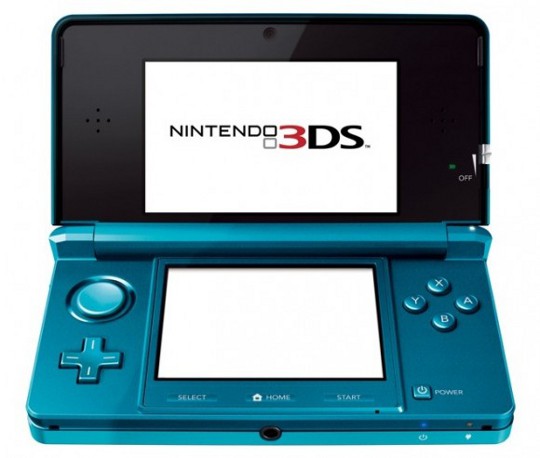This study provides a comprehensive analysis for Scopely to enhance its position as a leader in interactive and mobile gaming, focusing on AI integration in live operations, in-game commerce, and player analytics. The research reveals the urgent need for gaming companies to navigate accelerated AI adoption and evolving player expectations for personalized experiences. The goal is to identify the most impactful AI applications over the next three years and strategies that maximize engagement and monetization while maintaining player trust. Significant to this goal is balancing innovation with ethical considerations, including data privacy and transparency, while recognizing AI's potential to enhance storytelling and create immersive experiences. Employing a mixed-methods approach with industry interviews, a survey of over 1,000 U.S. gamers, and secondary research, Part I establishes the foundation for understanding AI's transformative impact - setting the stage for Part II's empirical findings and strategic recommendations.
Part II: Live Service Games - Consumer Engagement and Retention
With this increased competition form live service gaming, consumer expectations continue to shift and grow. In Part II of this capstone research by Heinz College Master of Entertainment Industry Management students, the team has employed data-gathering methods such as interviews, a survey, and social listening to better understand factors influencing player engagement and retention.
Part I: Best Practices for Live Service Game Campaigns
Live service games, or LSGs, are one of the largest drivers in gaming revenue. However, as the market continues to saturate, game developers are finding it difficult to sustain players. In part one of this capstone study by Heinz College Master of Entertainment Management students, learn more about the background of these games and what has made them so successful.
Part II: Game IP: From Console to Screen
As the video game industry continues to grow, Hollywood studios are capitalizing on this intellectual property (IP) success through film and television adaptations. Students from Heinz College’s Master of Entertainment Industry Management program sought to better understand the current market for these adaptations. In Part II, see what film and video game executives consider to make an adaptation successful. Additionally, through a survey of gamers and non-gamers, learn what potential audiences prefer to see.
Part I: Playing the Game: The Convergence of Video
Due to the popularity and booming business of video games, Hollywood studios have capitalized on popular game titles by developing new content based off of their intellectual property (IP). This study sets out to better understand video game IP’s impact on film and television markets and what specific elements might impact an adaptation’s success.
2022 Top 10 Articles
Every year we review our analytics to highlight what you, our readers, have found the most compelling. In 12 short months, we have witnessed waves of new technology erupt onto the marketplace, like OpenAI’s Dall-e, and others tumble into chaos, most notably cryptocurrency. The top 10 show how YOU have followed the change.
Managing Privacy, Identity, And Virtual Worlds In Video Games: Part Two
Managing Privacy, Identity, and Virtual Worlds in Video Games: Part One
The video gaming business is now a world-leading entertainment industry with nearly 180 billion U.S. dollars in market value (Statista, 2021). As more private information and in-game data are collected and utilized to support gaming, it may also threaten the safety of gamers' privacy. Therefore, it is essential for gaming companies to understand the business implications of collecting and using gamers’ private information. There have been studies that take account of the privacy landscape across industries, but privacy in the gaming industry remains less examined given its complexity and rapid recent growth.
The Monopoly Game: How Consolidation Jeopardizes Content Independence in Gaming
Throughout my tenure as Chief Editor of Research at AMT Lab, I have focused on the benefits of the gaming industry for nonprofits, as well as the monopolistic tendencies and battles of Big Tech, specifically regarding arts and entertainment. Recently, these two worlds have collided, as a wave of consolidation in the gaming industry has raised a new set of antitrust concerns across the globe. In the center of it all? None other than Microsoft, a Big Tech giant that has evaded the antitrust spotlight over the past few years – until now. Due to the expanding value of the video gaming industry at over $300 billion, mergers and acquisitions seemed an obvious destiny bound for the trials and tribulations of antitrust litigation. Microsoft has successfully inserted itself into the gaming industry, incited the largest wave of consolidation that it has ever seen, and merged its dominant position in the sector with its Big Tech-skewed Metaverse goals.
Aristotle & Gaming Case Studies (Tragedy is Fun: Aristotle Revisited)
As noted in How Video Games Can Serve as an Engagement Experience, video games, particularly RPGs, are widely popular and engaging with exceptional character and plot structure. The Elder Scrolls V: Skyrim and The Witcher 3: Wild Hunt exemplify Aristotle’s model of dramatic tragedy in a modern form. These case studies prove that video games are fun, tragedy is fun, and by marrying the two, arts organizations can experiment with exciting new forms of audience engagement!
4 Recommendations for Building Inclusivity in the Video Gaming Industry: Part 3
Fixing the Video Game Inclusivity Problem: Part 2
Exploring An Equity & Inclusivity Problem: Gender & Ethnic Diversity in Video Games: Part 1
The video game industry expanded rapidly in the last decade with the U.S.A games market exceeding revenues of $43 billion in 2018. While there is growth, the industry is also facing an increasingly apparent and problematic disparity among audiences. In many traditional PC and console genres, women and non-white ethnicities are underrepresented both among the player-base as well as on-screen; furthermore, the player experience for underrepresented players is markedly different than their over-represented white male counterparts.
What’s on Your Phone, Drew Davidson?
It's Game On At The Louvre!
This March, it’s game on in the world’s most visited museum, the Louvre. A delivery of 5000 Nintendo 3DS consoles shall be left at the footsteps of the museum in an effort to revamp its audio guides, which are currently used by a mere 4% of its total visitors.

Not much is known regarding the content or how the in-built 3D capabilities will be utilized but Mashable reports that visitors will “have access to themed itineraries and commentaries, including child-appropriate ones, in seven languages.” The content of the tour is being developed by Nintendo in collaboration with the Louvre, who will have editorial control.
With so much emphasis on the Tablet-Smartphone duumvirate, gaming consoles have certainly been overlooked. Even though certain games have surfaced, such as Tate Trumps, they have hitherto, been developed for the hand-held tour guide technology that triumphs; the iPhone, the Droid, the HTC, or the iPad.
Additionally, there has not been much innovation in the field of audio guide technology, and even the audio tours themselves are static because they are based on a one-way communication channel. Thus, the Nintendo 3DS does sound promising as an audio guide technology that can offer 3D visuals and maybe, some playfulness?
 So now the question everybody would like to ask; will there be games, intellectually inclined games? Let’s hope so! Last year, Andre asked whether the arts can successfully have a game dynamic? In his article, he argued that games would help arts organizations “overcome certain aesthetic hurdles” and organizations should adopt games because of their “potential for growth.”
So now the question everybody would like to ask; will there be games, intellectually inclined games? Let’s hope so! Last year, Andre asked whether the arts can successfully have a game dynamic? In his article, he argued that games would help arts organizations “overcome certain aesthetic hurdles” and organizations should adopt games because of their “potential for growth.”
And growth there shall be. In fact, an article in the Economist states that “video games will be the fastest-growing and most exciting form of mass media over the coming decade.” Furthermore, the current figures for the gaming industry itself are astounding; “the global video game market was worth around $56 billion in 2010”, which is “ more than twice the size of the recorded-music industry, nearly a quarter more than the magazine business and about three-fifths the size of the film industry...” And this market is expected to reach sales of $82 billion by 2015!
Interestingly, the Economist also notes that the average age of players in America is 37, with 42% of them being female. With the incredible popularity of a bunch of angry birds and virtual farming, it's no surprise that the adult world surely likes to play every now and then. Yet playing on gaming consoles such as the Nintendo 3Ds falls in the domain of a somewhat younger demographic. So the Louvre’s new entry will certainly entice children to go whizzing about the museum, but what about the adults?
Maybe they will, for once, follow in the footsteps of their children. Maybe they won’t. Only March will tell. But one can’t deny that Nintendo consoles are certainly a fun way to begin the auditory odyssey towards art appreciation and knowledge of art history.
Meanwhile in the Louvre, behind her glass enclosure, and with onlookers abound, the Mona Lisa smiles. Gaming is her secret.



















